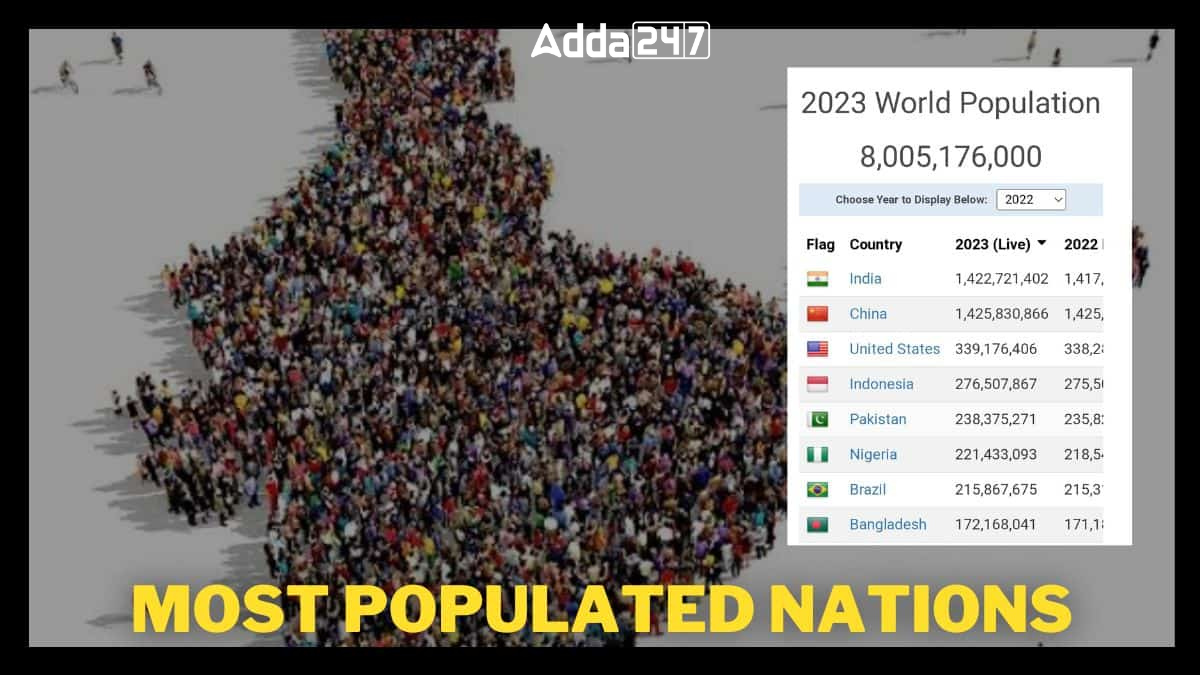The global population is continually on the rise, with billions of people inhabiting our planet. Among these diverse nations, some stand out for their sheer population size. In this article, we will explore the top 10 most populated countries in the world, delving into the factors contributing to their significant populations and the unique challenges and opportunities they face.
World’s Most Populated Country 2023
As of 2023, India has surpassed China as the most populated nation in the world, with both nations together representing 36 percent of the world’s total population and covering nine percent of habitable land. India’s population has taken the lead, while China’s is anticipated to slightly decline.
Despite its vast size, Russia, spanning over 9,000 km and occupying 17,098,250 sq. km, holds only two percent of the world’s population. A significant portion lies in deserts and permafrost, with 85% of inhabitants concentrated west of the Urals.
Bangladesh, with 171 million people in 147,630 sq. km, stands out for its remarkable population density of 1,160 inhabitants per square km, a unique characteristic globally. For perspective, Iowa, similar in size, has 3.1 million people and Illinois, slightly larger, has a population of approximately 12.8 million.
Top-10 Most Populated Counties in the World
India with the total population of 1,428,627,663, holds the title of most populated country in the world, followed by China, United States, Indonesia and Pakistan.
Here is the list of top-10 most populated countries in the world:
| Top-10 Most Populated Countries in the World | |||
| S. No. | Country | Population | Area |
| 1. | India | 1,428,627,663 | 2,973,190 |
| 2. | China | 1,425,671,352 | 9,388,211 |
| 3. | United States | 339,996,563 | 9,147,420 |
| 4. | Indonesia | 277,534,122 | 1,811,570 |
| 5. | Pakistan | 240,485,658 | 770,880 |
| 6. | Nigeria | 223,804,632 | 910,770 |
| 7. | Brazil | 216,422,446 | 8,358,140 |
| 8. | Bangladesh | 172,954,319 | 130,170 |
| 9. | Russia | 144,444,359 | 16,376,870 |
| 10. | Mexico | 128,455,567 | 1,943,950 |
Factors Affecting the Population of a Country
The population of a country is influenced by a variety of factors and these factors can be complex and interconnected. Here are some key factors that can affect the population of a country:
- Birth Rates: The number of births per 1,000 people in a given year affects population growth. High birth rates contribute to population growth, while low birth rates may lead to population decline.
- Death Rates: The number of deaths per 1,000 people in a given year also plays a crucial role. High death rates can reduce population growth, while lower death rates may contribute to population increase.
- Migration: Migration, both international and national, can significantly impact population size. Immigration (people moving into a country) and emigration (people leaving a country) can either increase or decrease the population.
- Fertility Rates: The average number of children born to women in a population affects population growth. High fertility rates contribute to population growth, while low fertility rates may lead to population decline.
- Life Expectancy: Improvements in healthcare, sanitation and overall living conditions can increase life expectancy, leading to a larger population. Conversely, factors like disease, lack of healthcare and poor living conditions can reduce life expectancy.
- Economic Factors: Economic conditions can influence population growth. A strong economy may attract immigrants, while a weak economy may lead to emigration. Economic stability can also impact birth rates, as financial security can influence family planning decisions.
- Government Policies: Government policies related to family planning, healthcare, immigration and social welfare can have a significant impact on population dynamics.
- Education: Education levels, especially for women, can influence family planning decisions and fertility rates. Higher levels of education are often associated with lower fertility rates.
- Healthcare: Access to healthcare services, including maternal and child healthcare, can impact both birth and death rates, affecting overall population growth.
- Cultural and Social Factors: Cultural and societal norms, values and traditions can influence family size and structure, affecting birth rates. Social attitudes towards issues like gender roles and contraception also play a role.
- Natural Disaster and Environmental Factors: Natural disasters, climate change and environmental conditions can impact a country’s ability to support its population. Extreme events may lead to displacement and affect overall population numbers.





 Which City is known as the City of Bambo...
Which City is known as the City of Bambo...
 Who was the First Home Minister of India...
Who was the First Home Minister of India...







